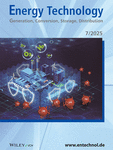Journal list menu
Export Citations
Download PDFs
Table of Contents
CH4-Selective Mixed-Matrix Membranes Containing Functionalized Silica for Natural Gas Purification
- First Published: 28 August 2020
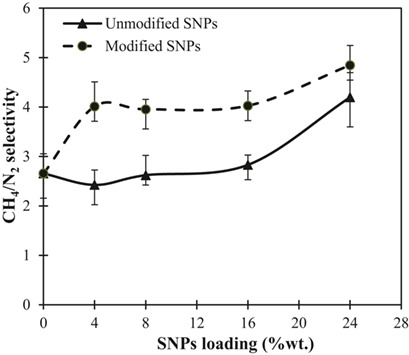
The effect of surface-modified silica nanoparticles (SNPs) on improving natural gas purification of Pebax membranes was investigated. CH4/N2 and CO2/N2 were separated using the prepared mixed-matrix membranes. The carboxylic-modified SNPs strongly interacted with the polymer matrix, improved the distribution of the nanofiller in the membrane matrix, and enhanced the permeability and selectivity.
Synthesis and Characterization of Polycarbonate/TiO2 Ultrafiltration Membranes: Critical Flux Determination
- First Published: 19 August 2020
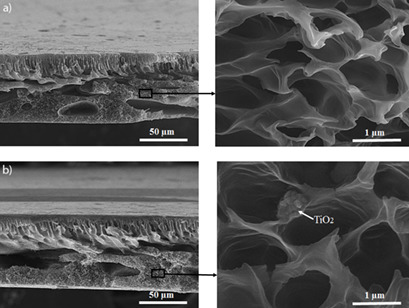
Polycarbonate/TiO2 nanocomposite ultrafiltration membranes were synthesized via nonsolvent-induced phase separation. This modification of polycarbonate membranes was performed in order to enhance hydrophilicity and antifouling properties in a submerged membrane system for the removal of humic acid with and without polyaluminum chloride coagulant. A higher critical flux was achieved by such membranes.
Effects of Gelatin and Nano-ZnO on the Performance and Properties of Cellulose Acetate Water Membranes
- First Published: 14 May 2020
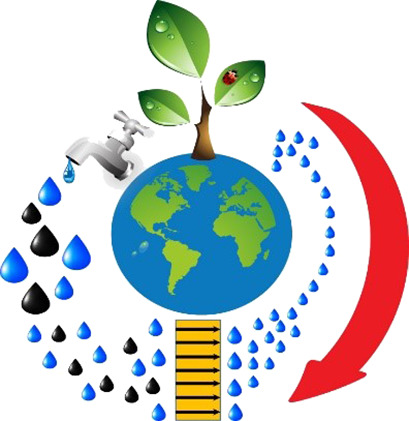
Due to its biodegradability and renewability, a cellulose acetate membrane was selected for purifying water. An improved performance of membranes was achieved by adding gelatin and ZnO nanoparticles. Gelatin serves as a natural-based additive to control the structure and properties of the membranes. In this way, both supplying clean water resources and protecting the environment were considered.
Characteristics and Performances of Blended Polyethersulfone and Carbon-Based Nanomaterial Membranes: Effect of Nanomaterial Types and Air Exposure
- First Published: 27 April 2020
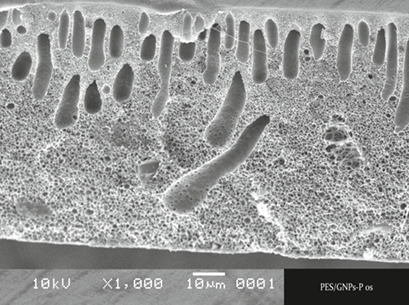
Membrane properties and characteristics obtained through phase inversion depend on numerous parameters and the techniques applied during preparation and processes. Impregnation of different carbon-based nanomaterials in a polymeric membrane and air exposure treatment resulted in different membrane features which were compared to the pristine polymeric membrane.
PEBA/PSf Multilayer Composite Membranes for CO2 Separation: Influence of Dip Coating Parameters
- First Published: 09 April 2020
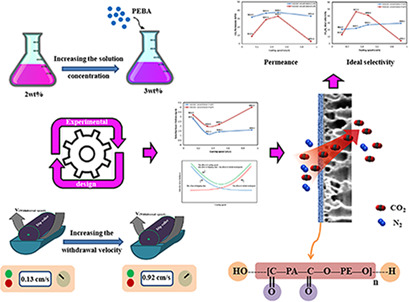
Polyether block amide/polysulfone composite membranes were prepared by the dip coating method and the effects of the coating speed and the solution concentration on the membrane performance were investigated. With increasing coating speed, the increasing withdrawal speed and the decreasing dipping time result in a thin selective layer at the appointed coating speed value.
Poly(vinyl alcohol)/Carboxyl Graphene Membranes for Ethanol Dehydration by Pervaporation
- First Published: 13 January 2020
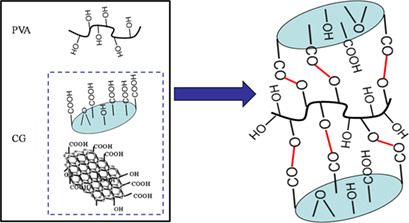
Carboxyl graphene with crosslinking and hybridization functions was incorporated into poly(vinyl alcohol) to form novel high-performance water-selective mixed-matrix membranes. The hydrophilicity and crossliking structure of the membranes led to moderate swelling. The membrane crystallinity and the free volume could be tuned effectively, thus promoting long-term stability and enhanced separation.
Various Techniques for Preparation of Thin-Film Composite Mixed-Matrix Membranes for CO2 Separation
- First Published: 03 September 2019
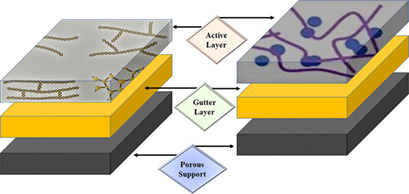
Thin-film composite mixed-matrix membranes are considered as an efficient separation technology for gas separation, fabricated as enhanced versions of mixed-matrix membranes. Recent advancements in these membranes are reviewed by comparing their performance in terms of permeability and selectivity. Various preparation techniques and their effect on the gas separation performance are described.
Al2O3/Yttria-Stabilized Zirconia Hollow-Fiber Membrane Incorporated with Iron Oxide for Pb(II) Removal
- First Published: 09 April 2019
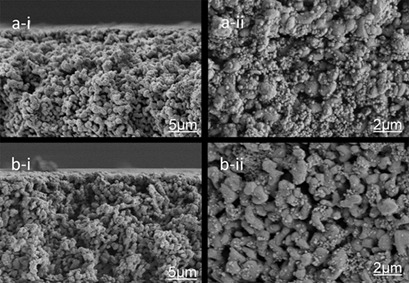
Dual-function Al2O3/yttria-stabilized zirconia hollow-fiber membranes deposited with Fe2O3 are introduced for Pb(II) removal from wastewater. An in situ hydrothermal method is employed to simultaneously synthesize and deposit Fe2O3 on hollow-fiber membranes. The deposited Fe2O3 membrane allows for the dual function of adsorption and separation for Pb(II) removal with improved adsorption capacity.
Branched Polyvinyl Alcohol Hybrid Membrane for Acid Recovery via Diffusion Dialysis
- First Published: 14 March 2019
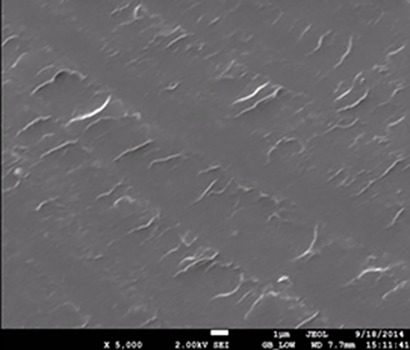
Branched polyvinyl alcohol (PVA)-based hybrid anion exchange membranes were prepared via sol-gel reaction between PVA grafted with poly(allyltrimethylammonium chloride) and tetraethoxysilane. With increasing grafting ratio, the ion exchange capacity increased. Balancing flux and selectivity, membrane D can be selected as a diffusion dialysis membrane to recover acid from acidic waste liquid.
Modification of a Poly(tetrafluoroethylene) Porous Membrane to Superhydrophilicity with Improved Durability
- First Published: 25 February 2019
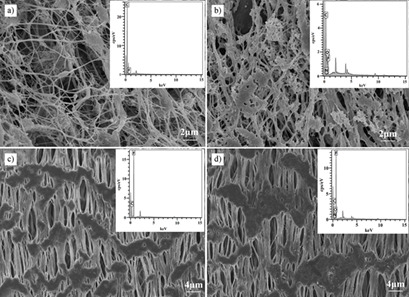
Hydrophobic flat-sheet and hollow-fiber poly(tetrafluoroethylene) membranes were modified by a commercial fluorocarbon surfactant to reach superhydrophilicity. The superhydrophilic membranes are characterized by enhanced wetting stability and resistance to acid and alkali solutions together with good filtration performance and antifouling property. A facile and effective route of modification is provided.
Effect of the Co-SiO2 Mesoporous Layer Coating Step on the Performance of Liquid Fuel Dimethyl Amino Ethyl Azide Dehydration
- First Published: 15 February 2019
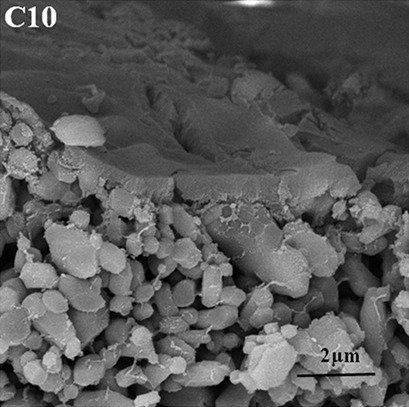
The sol-gel method is commonly applied via colloidal and polymeric routes for ceramic membrane preparation. Co-SiO2 ceramic membranes based on mullite discs were successfully synthesized and employed for dehydration of the liquid fuel dimethyl amino ethyl azide (DMAZ) via pervaporation process. These membranes are promising candidates to be applied in large-scale pervaporation dehydration of DMAZ.
Isothermal Adsorption Behavior of Cesium Ions in a Novel Chitosan-Prussian Blue-Based Membrane
- First Published: 13 February 2019
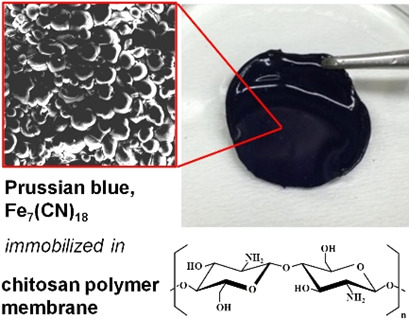
A novel chitosan-Prussian blue-based membrane was successfully prepared through addition/removal of polyethylene glycol. The membrane exerts a high immobilizing stability as well as attractive adsorption characteristics for the selective removal of cesium ions, e.g., from water resources. High amounts of immobilized Prussian blue improve the adsorption ability of the membrane.
Effect of the ZIF-8 Distribution in Mixed-Matrix Membranes Based on Matrimid® 5218-PEG on CO2 Separation
- First Published: 21 January 2019
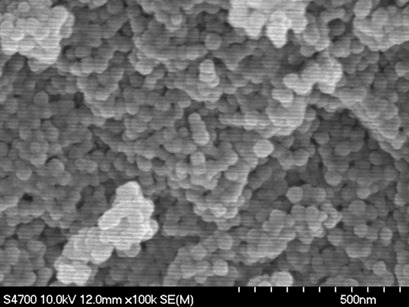
Mixed-matrix membranes based on Matrimid®, PEG 200, and ZIF-8 were successfully prepared by the traditional and the non-dried metal-organic framework method. The membrane preparation procedure played an important role for the separation properties of the membranes, at least in the dispersion of the filler across the membrane. The incorporation of ZIF-8 nanoparticles increased the CO2 permeability.
Enhancing the CO2 Separation Performance of Matrimid 5218 Membranes for CO2/CH4 Binary Mixtures
- First Published: 08 January 2019
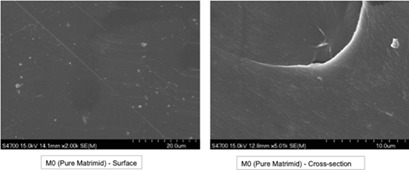
Matrimid gas separation membranes are widely studied for carbon dioxide capture from gas mixtures such natural gas and biogas, despite their rather low permeabilities. Blending Matrimid with low concentrations of polyethylene glycol can roughly triple the carbon dioxide permeability and also increases the carbon dioxide/methane separation factor.
Structure and Performance of Poly(vinylidene chloride-co-vinyl chloride) Porous Membranes with Different Additives
- First Published: 26 October 2018
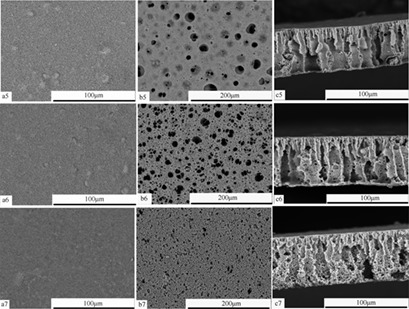
The issue of pore structure changes and antifouling performance of membranes was addressed by adding water-soluble and water-insoluble additives. Poly(vinylidene chloride-co-vinyl chloride) porous membranes with different contents of water-soluble polyethylene glycol and water-insoluble silicon dioxide hydrophilic nanoparticles were prepared by non-solvent-induced phase separation and tested.
Poly(vinylidene difluoride) Membrane Assisted by Modified ZnO/ZIF Nanoparticles for Membrane Distillation
- First Published: 03 August 2018
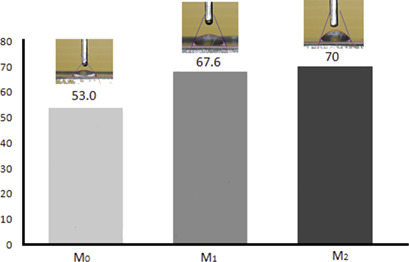
Nanoparticles are a promising tool to increase the surface hydrophobicity and reduce the surface energy of membranes. They were modified in several processes to be hydrophobic and applied in membrane preparation to improve the membrane separation process for seawater desalination. After modification, their porosity increased significantly and the contact angles became larger.
Synthesis of High-Performance Pebax®-1074/DD3R Mixed-Matrix Membranes for CO2/CH4 Separation
- First Published: 27 June 2018
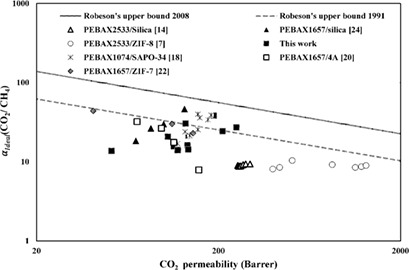
Before natural gas can be transported and used, it is essential to remove impurities such as CO2. In this work, polymer/zeolite (Pebax®-1074/DD3R) mixed-matrix membranes (MMMs) were fabricated for gas-separation applications. The performances of the MMMs were studied at different operating conditions and DD3R loadings. The separation performance of Pebax®-1074 was improved by using DD3R as a filler.
Poly(vinylidene fluoride)-Based Membranes for Microalgae Filtration
- First Published: 22 March 2018
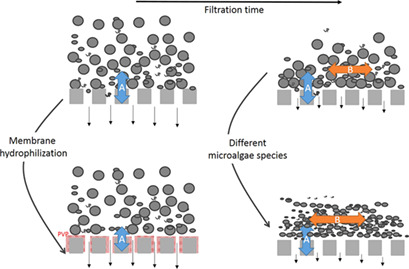
The hydrophobicity of membranes is assumed to be a main cause of membrane fouling. Two poly(vinylidene fluoride) membrane modification methods, hydrophilization and sulfonation, were tested to produce a fouling-resistant membrane for microalgae filtration. Both methods were able to alter the membrane surface to become more hydrophilic. Fouling was also influenced by the microalgae species.
Recent Membrane Developments for CO2 Separation and Capture
- First Published: 05 January 2018
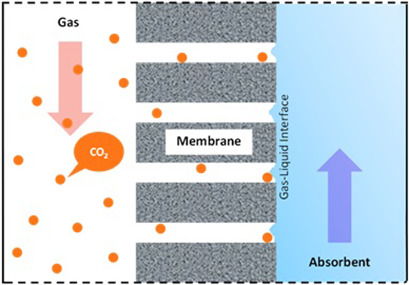
The state-of-the art membrane developments, especially for CO2 separation via the two membrane technologies, namely, membrane gas separation and membrane contactor, are updated. Concepts, challenges, and strategies to tackle the limitations of both membrane technologies are discussed. Future perspectives of these technologies as a potential solution for CO2 removal and utilization are discussed.
[Ni3(HCOO)6]/Poly(styrene-b-butadiene-b-styrene) Mixed-Matrix Membranes for CH4/N2 Gas Separation
- First Published: 30 November 2017
![[Ni3(HCOO)6]/Poly(styrene-b-butadiene-b-styrene) Mixed-Matrix Membranes for CH4/N2 Gas Separation](/cms/asset/21e9ffc8-2c46-4224-9386-ff0d561a31cd/ceat201700317-toc-0001-m.jpg)
Separating CH4/N2 gas mixtures is challenging because methane and nitrogen molecules have similar molecular properties. High-performance mixed-matrix membranes were fabricated and a microporous [Ni3(HCOO)6] filler was added to the poly(styrene-b-butadiene-b-styrene) triblock copolymer for CH4/N2 separation. In contrast to pure polymer membranes, the novel membranes effectively enhanced CH4 permeability.









